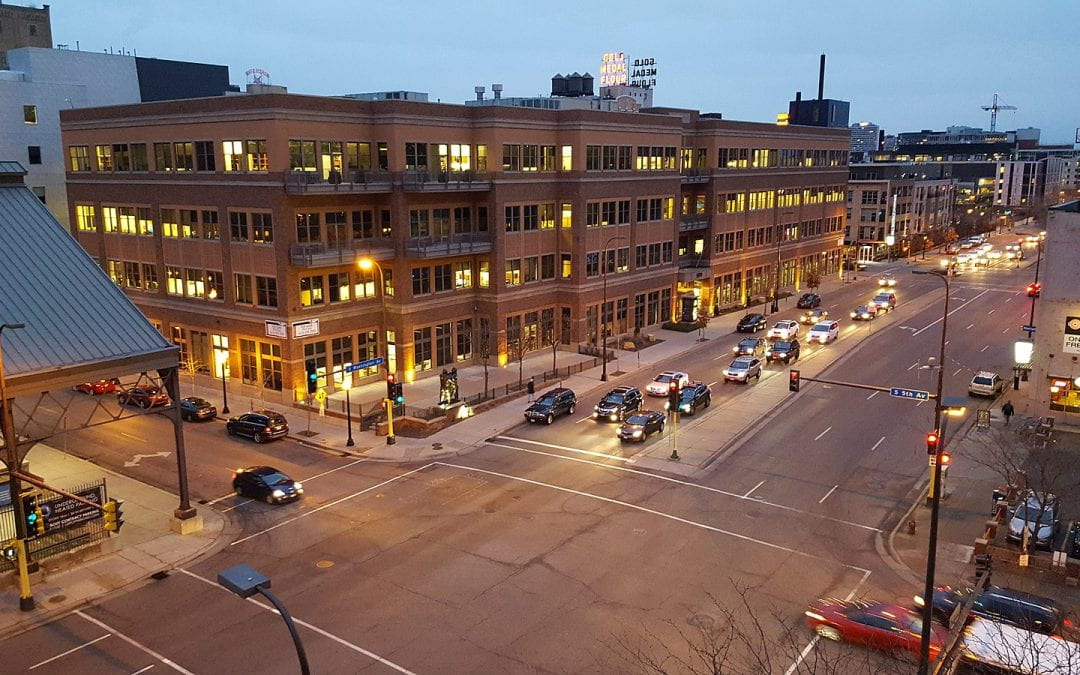What is Minneapolis 2040?
In March 2018, the City of Minneapolis began public meetings to discuss its plan for future growth. Over the course of two years, residents participated in sharing their hopes for the city. It was determined that as the city grows, everyone must prosper, regardless of socioeconomic status, race, nationality, and other demographic factors. Historically, not everyone has benefitted from the city’s development. The new Minneapolis 2040 plan centers around removing barriers and overcoming inequities created by past policies that prevented equitable access to housing, jobs, and investments. The city aims to use this plan to guide decision-making that affects the long-term future of Minneapolis in terms of its built, natural, and economic environment. The city council and mayor finalized the plan in October 2019, and the policies and action steps took effect on January 1, 2020.
As required by Minnesota State Law, Minneapolis updated its zoning rules to match the development guidelines that the City Council approved in Minneapolis 2040. The Land Use Rezoning Study is the next major update to zoning regulations and will create consistency between the zoning code and the comprehensive plan. The Study was adopted by the City Council on May 25, 2023 and went into effect on July 1, 2023. According to Jason Wittenberg, Manager of Code Development for the City of Minneapolis, “[The adoption of the study] doesn’t necessarily signal the end of our regulatory improvement work; it does mean that we have alignment between Minneapolis 2040 and the zoning code. Any significant incongruence between the two is now eliminated.” While many of the Plan’s 100 policies focus on the transportation sector’s growth, development, equity, and environmental impacts, Policy 6 lays out critical elements of the City’s plans for parking regulations throughout Minneapolis.
What are Parking Minimums? How is Minneapolis Using Them to Create More Resilient and Equitable Communities While Mitigating the City’s Greenhouse Gas (GHG) Emissions?
Action Step I of Policy 6 addresses the elimination of off-street parking minimums within the City’s zoning code. This parking ordinance reform seeks to improve the built environment by supporting alternative forms of transportation that produce lower GHG emissions than private vehicle use. Altering the City’s parking regulations through this zoning policy reduces housing costs, disincentivizes automobile use, develops efficient land use, and supports a walkable urban design. Limiting the amount of required parking allows for less vehicle ownership, and additional space for housing, businesses, and outdoor recreation. This also increases the centralization of housing, businesses, recreational spaces, and jobs, which diminishes dependence on vehicles and lengthy commutes. These benefits will be shared by all citizens, regardless of the neighborhood they live in, as the elimination of parking minimums was implemented citywide under the new zoning code.
In accordance with the 2013 Minneapolis Climate Action Plan, the city hopes to reduce carbon emission levels by 80% of their 2006 levels by 2050. As of 2015, vehicle travel accounted for 26% of the city’s GHG emissions. Over 90% of miles traveled in the city are in personal automobiles. The city estimates that a 38% reduction in private vehicle mileage is needed to achieve the 2050 emissions reduction goal. To help meet the City’s goal of reducing emissions from private-vehicle use, Minneapolis removed all parking minimums from its zoning code in 2021. In 2020, new dwelling units in multi-family residential developments averaged 0.76 parking spaces per new dwelling unit. According to Wittenberg, “[as a result of the] elimination of all minimum parking requirements, in the most recent 2.5 years, new dwelling units in multi-family residential developments have been averaging 0.61 parking spaces per new dwelling unit. So, the market has gotten more comfortable with the idea that buildings don’t need an off-street automobile storage space for every household. That is a big win for more housing and for sustainability, affordability, and urban design goals.”
What Can be Learned from Minneapolis’ Elimination of Parking Minimums?
Changing the parking landscape of a municipality might seem like it would have minimal effects on a community’s ability to equitably adapt to the effects of climate change and mitigate its greenhouse gas production; however, when less space is available for private vehicles, residents are compelled to find other means for transportation, such as biking, carpooling, buses, trains, and other forms of public transit.
At least 28 percent of the United States’ GHG emissions are produced by transportation, and 37 percent of the transportation sector’s GHG emissions are created by sport utility vehicles, pickup trucks, and minivans, while another 23 percent are created by passenger cars. With these statistics in mind, it becomes clear that reducing private-vehicle use is imperative to mitigating the United States’ overall GHG emissions. Minneapolis could serve as a guidepost for other municipalities when it comes to eliminating parking minimums to reduce GHG emissions from private vehicle use, while creating more affordable housing in walkable neighborhoods.
This article is part of a series from the Land Use Law Center that explores how local governments can implement Climate Resilient Development (CRD) as defined in the Sixth Assessment Report of the IPCC. CRD requires innovative reform of land use planning and regulation by local governments, The series presents and analyzes numerous local laws and policies capable of adapting to and mitigating climate change to create equitable and sustainable neighborhoods, achieving “sustainable development for all.”
A special thank you to Jason Wittenberg, Manager of Code Development for the City of Minneapolis and Joe Bernard, Planning Project Manager for the City of Minneapolis for taking the time to speak with the author of this blog post about Minneapolis 2040, parking minimums, and the recent changes to the City’s zoning code.

